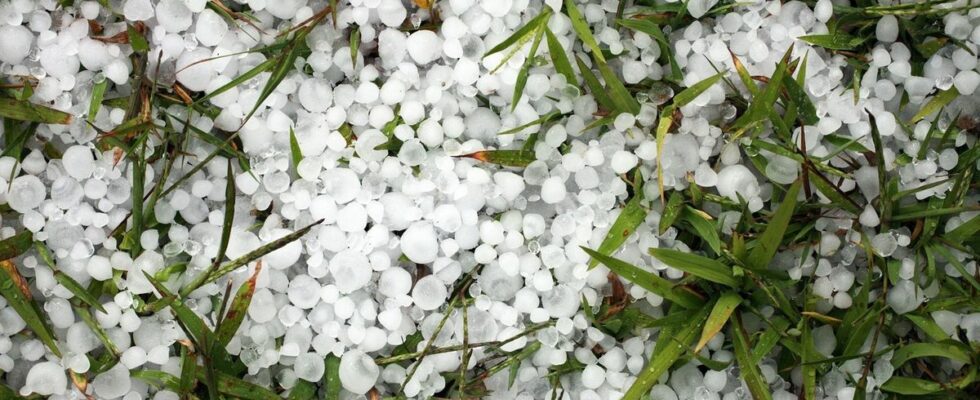Published on
updated on
Reading 2 min.
In France, we speak of “giboulés de mars” to refer to the hailstone season. But due to global warming, hailstorms could become more spaced out in time, with increased violence. This is in any case the conclusion of a recent study carried out in the United States.
It is a climatic phenomenon that farmers and winegrowers fear above all else. But unfortunately, while hailstorms may become rarer in the future, their intensity is likely to increase, as are the enormous costs that these weather events generate. According to an american study published in mid-August in the journal Nature Climate and Atmospheric Science, the frequency of these storms could indeed decrease by an average of 25% in the coming years, but the size of the hailstones could increase by 15 to 75%, depending on the trajectory of greenhouse gas emissions released into the atmosphere.
Hailstones the size of golf balls
To make the predictions, researchers at Northern Illinois University simulated future hailstorms using supercomputer-based weather models, then analyzed how these storms would change as atmospheric CO2 emissions increase. The reduced frequency of these storms is thought to be due to warmer air and increased ice melt, which cause hailstones to melt more quickly when they hit the ground.
In contrast, stronger storm updrafts, aided by an increasingly warm and humid atmosphere, are likely to increase the size of hailstones and cause more intense storms. According to the researchers, these hailstones could measure more than four centimeters in diameter, about the size of a golf ball.
Increasingly costly climate events
The authors of the study also point to the cost of these storms. “In the last 18 months, we have recorded more than $100 billion in losses in the United States as a result of severe storms, the majority of which is due to hail,” Vittorio Gensini, lead author of the study, told Washington Post. Damage is frequently observed on private homes and public buildings (roofs torn off, electricity cut off), as well as vehicles. The problem is all the more thorny because all current infrastructures were not designed to withstand large hailstones.
“Although not exhaustive, these works provide insights into process-based understanding of potential changes and are relatively inexpensive from a computational perspective.“, the authors of the study emphasize. Research over longer periods, in more regions and on a larger number of climatic events is however necessary in order to determine more precisely the frequency and intensity of hailstorms in the years to come.
The United States is not the only country affected: in France, the period from March to July 2024 was marked by violent hailstorms that seriously ravaged agricultural and wine-growing crops in several regions, particularly in Occitanie, Nouvelle-Aquitaine, Bourgogne-Franche-Comté and Auvergne-Rhône-Alpes, where thousands of homes were left without electricity.
